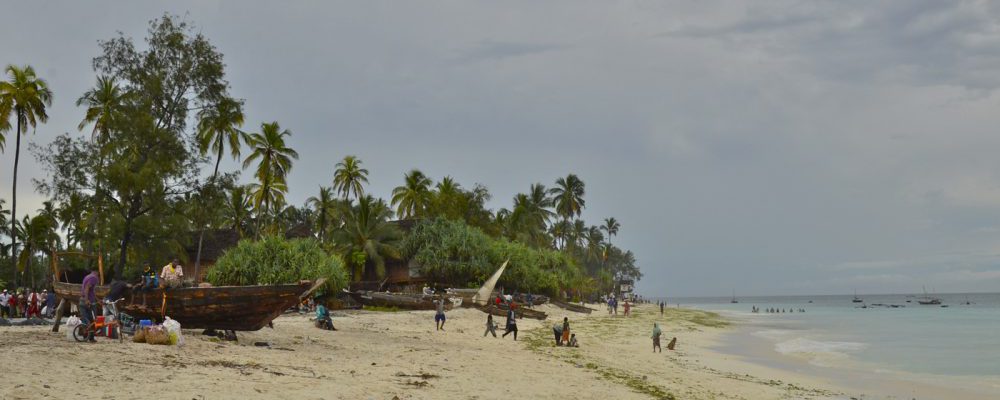North Coast
An hour’s drive from Stone Town, northern Zanzibar is characterized by its small guest houses, vibrant nightlife, and youthful visitors, as well as its pleasant white-sand beaches, modest tides, and excellent dive spots.
Centered around Nungwi Village on the northernmost tip is one of the island’s busiest beach destinations. Off the beach, the north offers a range of other sights and activities, including dhow builders, an active fish market at Mkokotoni, the Mnarani and Baraka “natural aquariums,” and 16th century ruins at Fukuchani and Mvuleni.
If you seek quieter resorts in the area, head about 4km southeast of Nungwi to the the tiny village and golden sands of Kendwa, or select one of the top-end resorts concentrated on the northeast side, the most picturesque section of northern Zanzibar.
East coast

The whole length of the eastern coast is a nearly unbroken powder-white beach lined with palm trees and protected by offshore coral reefs – an idyllic paradise for those seeking relaxing beach time. However, ocean swimming on this coast is tide dependent, as the water recedes several hundred meters at low tide, revealing rich coral flats. Most resorts here have beachside swimming pools to enjoy during low tide.
The large tidal swings allow for the harvesting of seaweed – you will see local women collecting and drying it for export. On the northeast section of the coast are the small fishing villages of Pongwe, Kiwengwa, and Matemwe. Inland from these is the Kiwengwa Pongwe Forest, rich with the biodiversity of a coral rag forest.
While this stretch of coastline remains intimate and calm, there are pockets of activity, especially around Paje Village in the southeast, known for its kite-surfing due to the steady breezes. Also in the southeast, the village of Makunduchi is the site of the lively Mwaka Kogwa festival every July, highlighted by what can only be called a free-for-all battle with banana stalks between teams of local men while women stand on the sidelines singing bawdy songs and hurling insults at the combatants.
South coast
The south is the most populated part of Zanzibar and offers more opportunities to engage with the locals. Kizimkazi Village was once the capital when the island was under the rule of the Shirazi settlers (known as the Wawinyi Wakuu, who preceded the
While the small beaches and low cliffs of the southwest are quite pretty, the main attraction here is to see the dolphins cavorting in the surrounding waters. Scuba diving within the Menai Bay Conservation Area is also a popular activity. The Jozani Forest Reserve, where the rare red colobus monkey can be spotted, is in the south central part of the island.
Fewer lodges are found in the south; consequently, most tourists who venture here come down just for a day visit. But for those seeking picturesque bungalows tucked amongst the trees overlooking azure waters, the southwest makes for a perfect hideaway.
west coast
The west side of Zanzibar is dominated in its central coast by Stone Town, the only city on the island. Beaches to the north and south of Stone Town are not as pristine as elsewhere, though some isolated tourist resorts on this coast have established themselves as peaceful getaways.
To the southwest is the Fumba Peninsula, a very laid-back and friendly corner of the island. Chumbe, Prison, Bawe and other small islands worth visiting for the day or overnight sit invitingly off the west coast and within sight of Stone Town.


